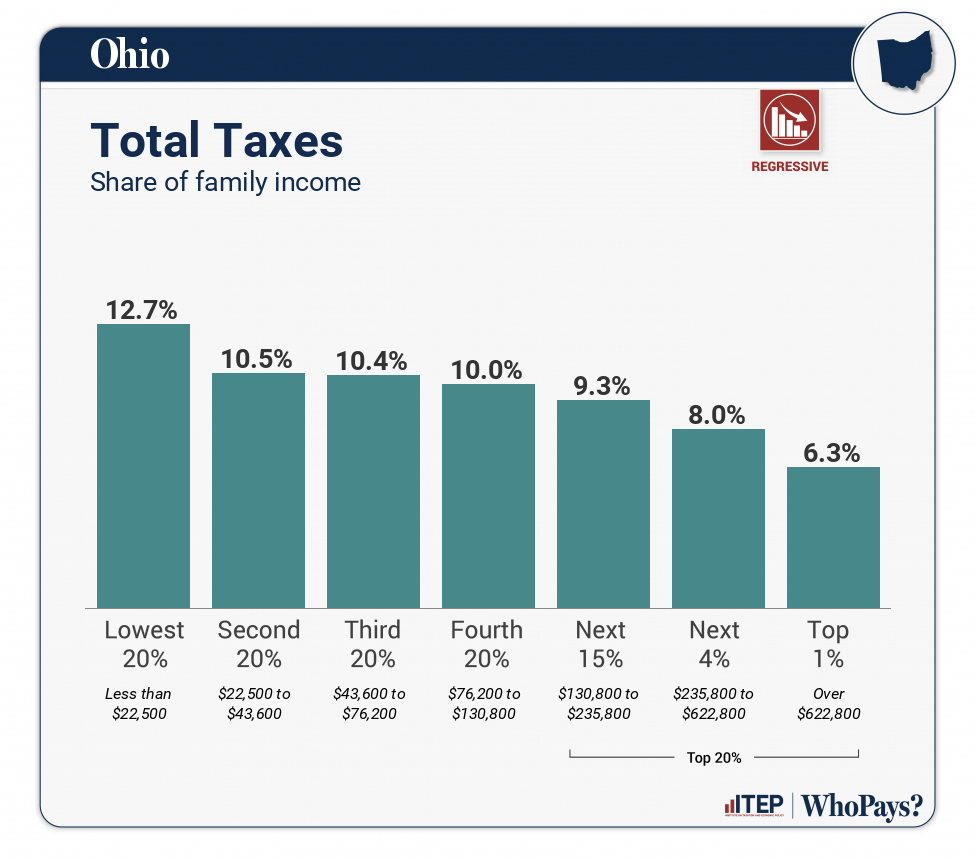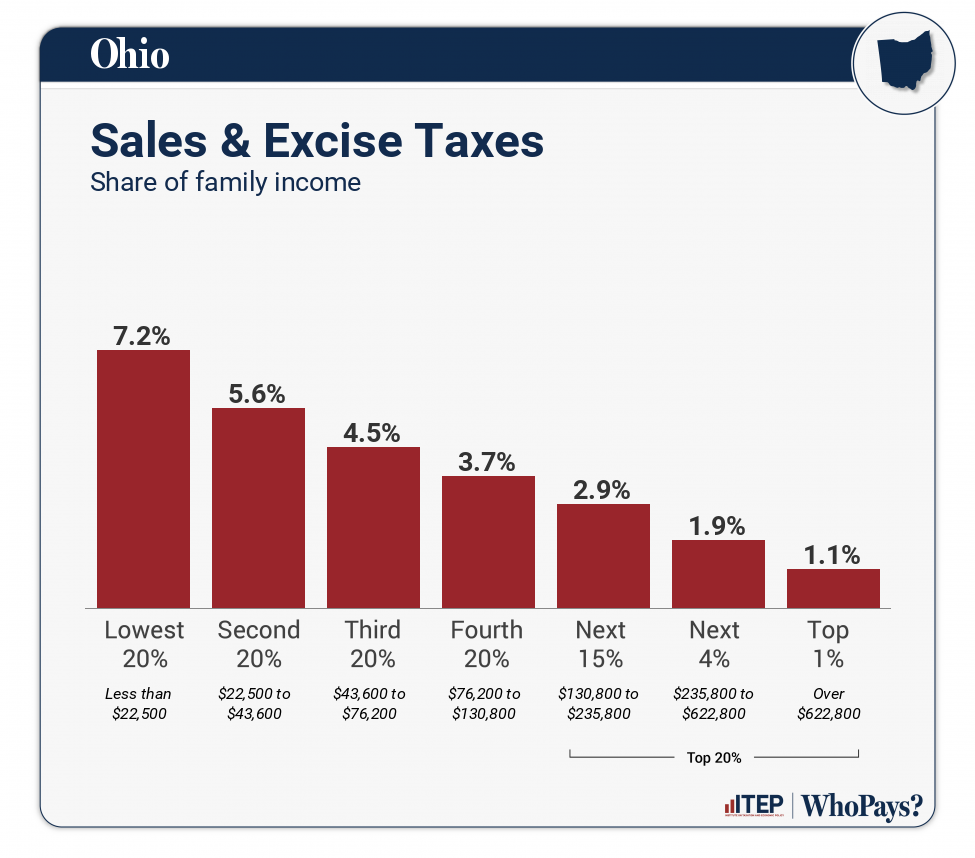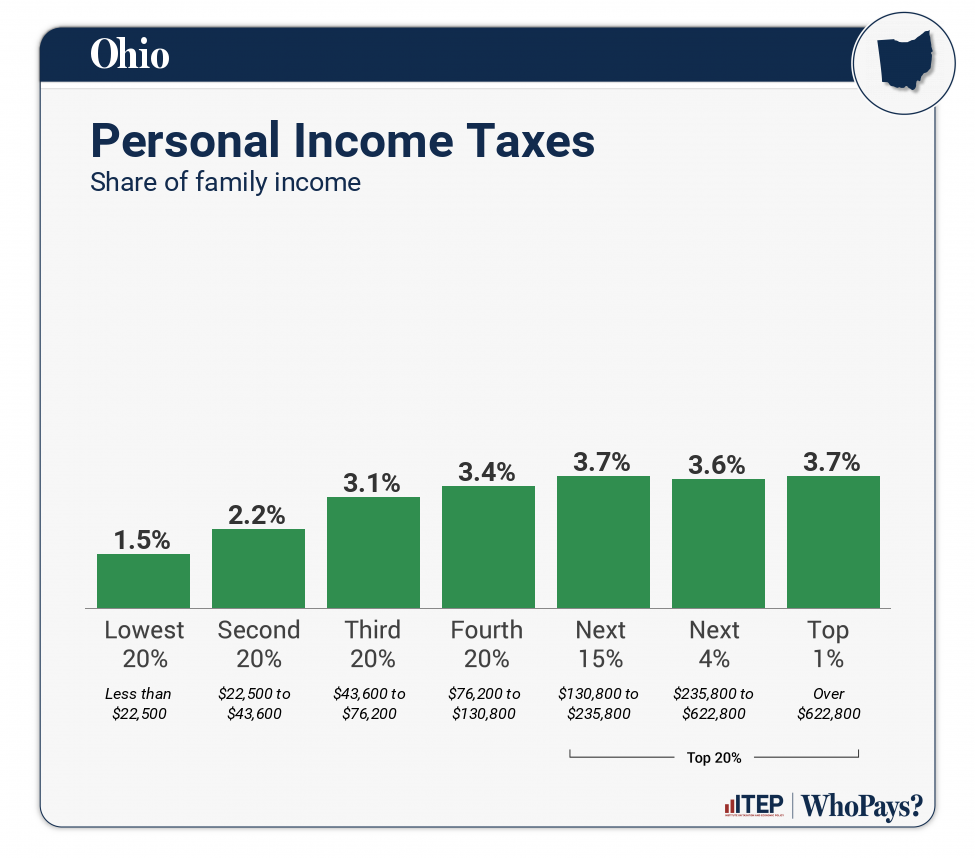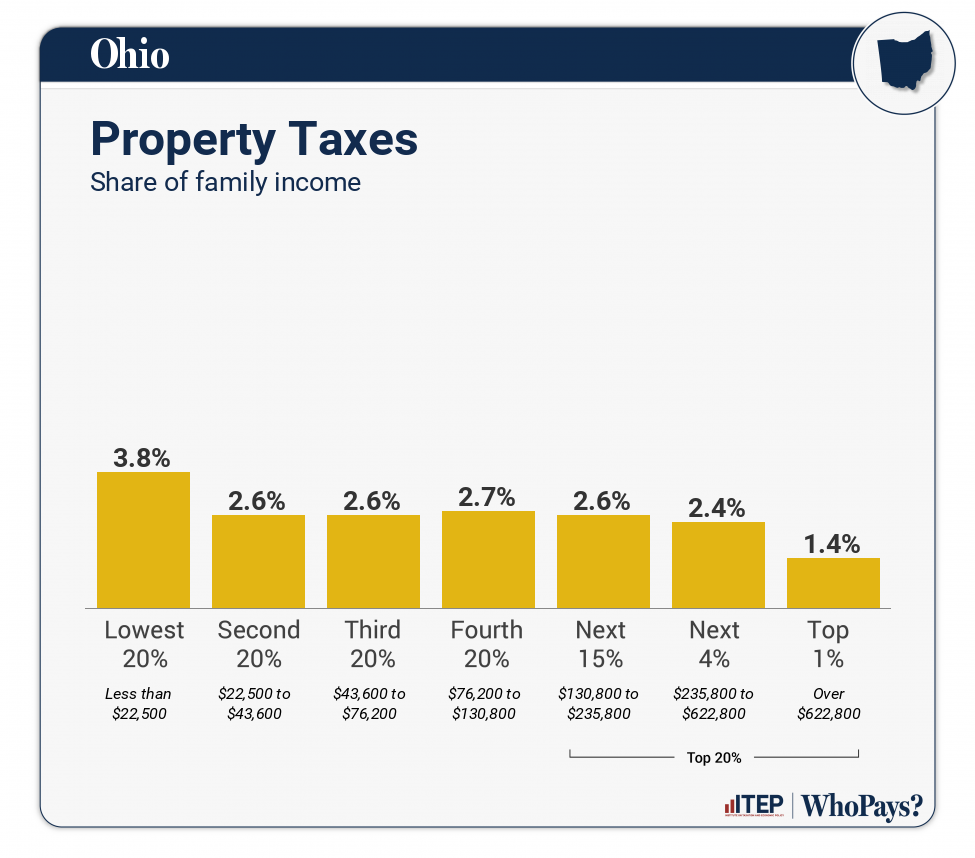Ohio: Who Pays? 7th Edition

Ohio
Download PDF
State and local tax shares of family income
| Top 20% | |||||||
| Income Group | Lowest 20% | Second 20% | Middle 20% | Fourth 20% | Next 15% | Next 4% | Top 1% |
| Income Range | Less than $22,500 | $22,500 to $43,600 | $43,600 to $76,200 | $76,200 to $130,800 | $130,800 to $235,800 | $235,800 to $622,800 | Over $622,800 |
| Average Income in Group | $12,500 | $32,300 | $59,200 | $100,800 | $163,400 | $341,400 | $1,051,300 |
| Sales & Excise Taxes | 7.2% | 5.6% | 4.5% | 3.7% | 2.9% | 1.9% | 1.1% |
| General Sales–Individuals | 3.1% | 2.9% | 2.5% | 2.1% | 1.6% | 1% | 0.5% |
| Other Sales & Excise–Ind | 2.6% | 1.4% | 0.9% | 0.6% | 0.4% | 0.2% | 0.1% |
| Sales & Excise–Business | 1.5% | 1.3% | 1.2% | 1% | 0.9% | 0.7% | 0.5% |
| Property Taxes | 3.8% | 2.6% | 2.6% | 2.7% | 2.6% | 2.4% | 1.4% |
| Home, Rent, Car–Individuals | 3.4% | 2.3% | 2.3% | 2.4% | 2.3% | 2% | 0.9% |
| Other Property Taxes | 0.3% | 0.3% | 0.3% | 0.3% | 0.3% | 0.4% | 0.5% |
| Income Taxes | 1.5% | 2.2% | 3.1% | 3.4% | 3.7% | 3.6% | 3.7% |
| Personal Income Taxes | 1.5% | 2.2% | 3.1% | 3.4% | 3.7% | 3.6% | 3.7% |
| Corporate Income Taxes | 0% | 0% | 0% | 0% | 0% | 0% | 0% |
| Other Taxes | 0.2% | 0.2% | 0.1% | 0.1% | 0.1% | 0.1% | 0.1% |
| TOTAL TAXES | 12.7% | 10.5% | 10.4% | 10% | 9.3% | 8% | 6.3% |
| Individual figures may not sum to totals due to rounding. | |||||||
ITEP Tax Inequality Index
ITEP’s Tax Inequality Index measures the effects of each state’s tax system on income inequality. According to this measure, Ohio has the 15th most regressive state and local tax system in the country. Income disparities are larger in Ohio after state and local taxes are collected than before. (See Appendix B for state-by-state rankings and the report methodology for additional detail.)
Tax features driving the data in Ohio
|
Provides an Earned Income Tax Credit (EITC)
Graduated personal income tax structure
Sales tax base excludes groceries
|
|
|
Mismeasurement of home value in the property tax tilts in a regressive direction
Allows income tax exclusion and lower rate for pass-through business income
Earned Income Tax Credit (EITC) is nonrefundable and limited in its reach
Real estate transfer tax does not include higher rate on high-value sales
Imposes a gross receipts tax in lieu of a corporate profits tax
Most local income taxes exclude investment income
Does not levy a tax on estates or inheritances
No Child Tax Credit (CTC)
|




